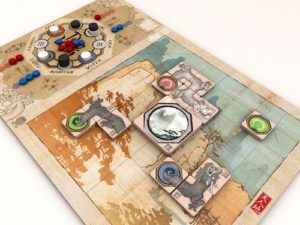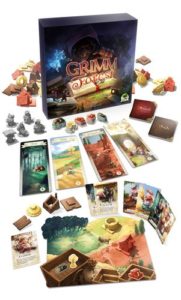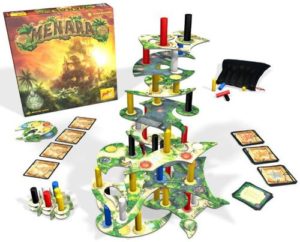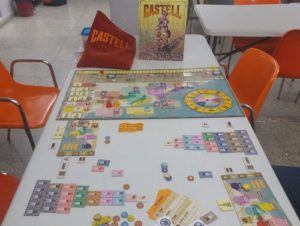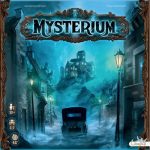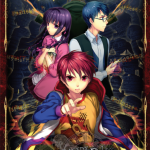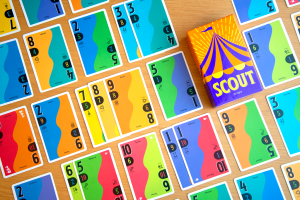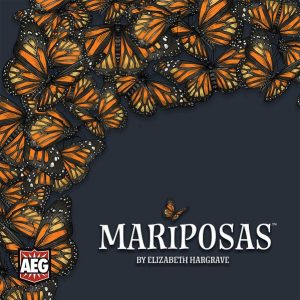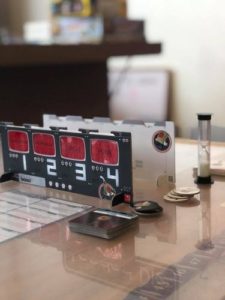
We are focusing on some of the lesser known titles here, games like Azul are obviously amazing and will win lots of awards, but we’ve already waxed lyrical about those ones and it’s nice to highlight some of the other great games that don’t get as much press.
2-Player
Tao long: The Way of the Dragon
This is a game about 2 dragon’s dog fighting each other until one or the other has been defeated. Players control one of these beasts and move them around the board by using the ‘Bao’; a mancala like system, where you pick up stones from an action spot and drop them one at a time on successive spots taking the action on the last spot you drop a stone at. There are 8 possible actions (move west/north etc… breath in fire/expel fire), but not everyone is available due to the current configuration of the stones. Hence the main part of the game takes place on the Bao as you try to set yourself up to get into a position to attack your opponent while trying to prevent them from hitting you by leaving stones in certain ways.
Gameplay is around 20-30 minutes and there is a slight learning curve if you haven’t played mancala and figure out the symbology for the dragons’ moves. The theme is very nicely implemented and the artwork is lovely. It also comes with a couple of advanced varients to try as well.
Family
The Grimm Forest
This is a contender for most over-produced game of all time! Where there could have been cardboard tokens there are giant minis. Instead of an empty box, a plastic custom game tray that puts everything away neatly in its own three tiered system. Due to humongous amounts of money raised via kickstarter creating economies of scale this game is now remarkably affordable for what it comes with.
What about the gameplay? You need to build 3, 3 part houses (wood, straw and brick). You get the resources by going to one of 4 locations (straw, wood, brick or one of each). Each player starts a round by secretly picking a location to go to, if they go there alone, they get all the stuff, if other join you, you have to share. The game gets really interesting when you add in all the friend and attack cards which grant you special abilities to mess with each other.
Light, fun, incredibly interactive and visually stunning. A great family game for the family that likes to get up in each others’ grills.
Dexterity
Menara
Check out the size of that thing! This is actually a co-operative game, where a team of builders are trying to build a tower to a certain height when the game ends.
It actually requires a lot of planning to do well at this. There are four colours of column available, yellow (loads) to blue (hardly any). A players turn mainly consists of taking a card and doing what it says. From finishing a platfom to moving one. You only have 6 columns in front of you to use and platforms have specific spots where you most put the columns of specific colours. This may mean you cannot complete the card in front of you, If so, you must build another level higher to win the game (starts at 4-5). You may find that the tower needs more support , so you decide to add another platform at the base – if so, you must add another level! This is a game not so much about not letting the structure fall like many dexterity games (you’ll almost certainly lose if it does though), but careful planning and efficient building (non-wobbly hands will help though). The resultant tower is huuuuuge, love it.
Strategy
Castell
Winner of the most original theme as well. This a game about putting on shows of human towers in Catalonia. You’ll move your troop around the region learning new skills that break the core rules of human tower building and creating the towers demanded by the people.
It’s very much a puzzle game as you try to collect the different numbered castellers and alter the teams skills which all have to be done in different places, while being in the right place at the right time to do the shows. It is immensly satifying when it works out and you show of the massive tower of humans that you have created. Plus the bag to put the castellers in is big enough to put some peoples head in! Awesome!
Kids
Outfoxed
This game was nominated for last years Kinderspiel des Jahres and although it took us a while to get round to picking it up, we are really glad we did. It’s like Clue crossed with Guess Who? A Fox has stolen a pie and is fleeing town, but in a town of foxes, who is the culpret? In this co-operative game players will move around the board picking up clues which they stick in this cool little slider that reveals whether the pie-stealer had that item on them (scarf, glasses, umbrella). You slowly narrow down the list of 16 till you make a guess. If you’re correct you win, if you’re wrong you lose. However, on their turn a player will nominate whether they want to look for clues or suspects. Clues let you move around the board. Suspects allows you to turn over cards to reveal pictures of foxes and what they have on them so you can figure out if they are innocent or not. To do the action they roll 3 dice, 3 sides are clues and 3 are suspects. You have to roll 3 of the thing you choose in 3 rolls (you can keep successes), if you don’t the fox moves towards the exit and your turn is over adding pressure to figure things out as fast as possible.
I played this with my 11 and 12 year olds and they loved it, but have also taught it to kids as young as 6 and they also had a great time and were able to figure out the deduction parts. Highly recommended.
Party
Decrypto
This game is so much fun. It fixes some of the issues (very, very minor issues mind you) I had with Codenames, namely the downtime and people freezing up and unable to think of a clue. However, it is one of those games that is really hard to try and explain to people, you just have to play it and after 2 rounds you will have your ‘Ah-ha’ moment and realize the genious of this very inexpensive title. It’s like Codenames crossed with Mastermind the code-breaking game. You win if you intercept your opponents codes twice, but lose if your own team fails to get your code with the same clues. There in lies the tension. Your own team can see your words which will never change throughout the game (each of the 4 words is associated to a number 1-4). One player on your team will receive a code card with three numbers e.g. 2-4-1 and give clues to help the team guess the code e.g. you may say ‘egg’ to help your team get the word ‘bird.’ The other team will hear all this and will be told the answer i.e. that #1 has something to do with ‘egg’. In the second round they will start trying to intercept the code. If they crack it they get a point, crack it twice the win. So saying a word like ‘nest’ for further clues to #1 is not a good idea because they know that egg and nest probably go together, so maybe say ‘high’ because birds fly high, but is that too vague and may cause your own team to get the code wrong (remember there will be 3 words said associated to 3 of 4 possible words), if they get it wrong twice you also lose. The tension really ramps up once the opposition has cracked the code once and you really have to be obscure. The opposition is also going throug the same travails at the same time and the person giving the clues rotate through the team, so everyone gets a turn or two to give clues.
The first half of your first game will be a fiddly mess, but as the rules say, just follow the step by step instructions and it will quickly make sense and an amazing time will follow. Highly, highly, highly recommended.

